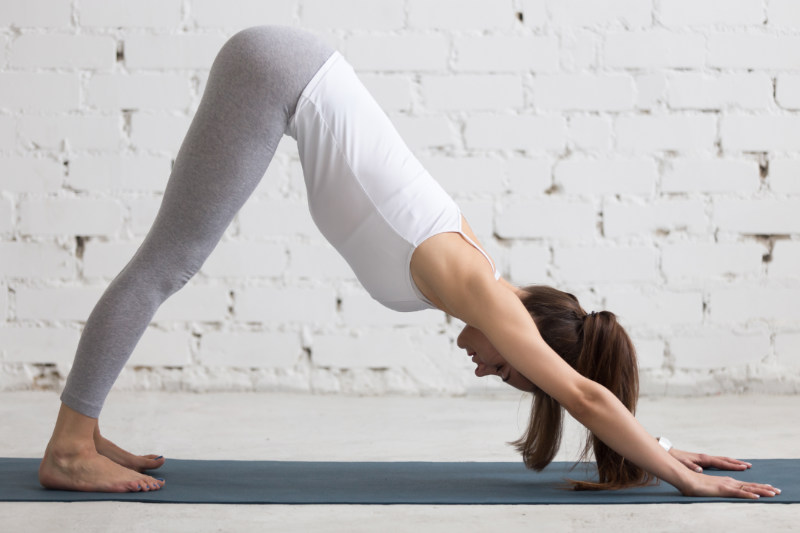
You might be curious about which exercise method is best for your body. You should consider these factors if you are considering taking up a new exercise program. Continue reading for more information. Both are great options for developing strength and flexibility. Both require breathing techniques to improve your posture. For those looking for a deeper meditation practice, yoga is the way to go. Pilates is great for anyone who wants to strengthen their core muscles after an injury or rehabilitation.
Both yoga and Pilates are great options for beginners. While yoga places a lot of emphasis on the mind, Pilates is all about the body. Both routines incorporate mats to improve flexibility and muscle strength. In addition, both emphasize a connection between the mind and body. While yoga is slower-paced and more meditative than Pilates, the benefits are similar. There are even some differences between the two types of workouts.
Yoga is a wonderful place to begin if you have never exercised before. The beginner's class will consist of gentle stretches and simple poses. Both training methods train the nervous and cardiovascular systems. Both can be beneficial for many conditions, such as incontinence or physical pain. Both are great for your mind as well as your body. If you are comparing Pilates and yoga, take into account your personal goals as well as your current physical state.

Both workouts work for different parts of the body. Both workouts are suitable for beginners. The focus on the body is greater in Pilates than yoga, which is more mental and more meditative. It is important to understand the difference between the two before committing to either one. Each has its pros and cons, so make sure you choose the one that is right for your needs. Here are some of the benefits each has.
While Pilates is more effective for sports recovery and yoga is better for that, yoga is great for healing because it incorporates breathing exercises, stretch-out, and stretching techniques. Both can be beneficial for improving posture and preventing sports injuries. Both exercises have benefits, but you need to decide which one suits your needs. There are a few pros that can help you decide which option is best for you. Make sure you do your research to discover the one that works best for YOU.
Both yoga and Pilates can be used to improve your mind-body. Both are mind-body exercises that focus on breathing and stretching. They can both be very good for your body. You should always consult your doctor before you attend a class. Certain exercises may be hazardous for those with certain medical conditions. You can benefit from both. Find out which one is best for you. Both types of exercise are possible. You can benefit from both.
The major differences between Pilates & yoga depend on the type and intensity of your exercise. Both focus on strengthening the muscles and stretching the body, and both use a mat for the exercises. There are two main differences between the two. The best type of exercise for you is what one does. You focus on your body in yoga while Pilates focuses more on the mind. You'll find that both will focus on your posture and breathing, which will result in a better feeling long-term.

Although both methods target muscle toning and stretching respectively, they do have their own goals. For example, Pilates emphasizes the mind while yoga works on muscles strengthening and stretching. It teaches breathing techniques and aligns the mind and spirit. The two approaches are complementary, and are not intended to compete with each other. They are great for people with different fitness goals. The difference between them is their style of exercise.
Both are great for beginners. Yoga is an excellent way to get moving if your body isn't very active. For beginners there are many poses to do and some gentle stretches. Both exercises require the use of props to assist the movements. The most important distinction between Pilates and yoga is whether you enjoy meditating or performing meditation. If you are unsure, either option is a good choice.
FAQ
How often should I exercise each week?
It all depends on how much time and what kind of exercise you like. You should do moderate-intensity aerobic exercise three to five days per week. You shouldn't do too much. It is crucial to exercise regularly in order to reap the full benefits of your workouts.
Which exercises are best for me?
It really depends on what kind of fitness goals you have. Some people are more focused on endurance activities such as running, cycling and swimming. Others enjoy lifting weights or using resistance bands. There are many exercise programs on the market today. You can choose the one that best suits you.
Do I need to exercise every day?
No! No! This could be walking fast enough so you feel slightly out breath or cycling hard enough to sweat.
Are Cardio exercises good or bad for your health?
Cardiovascular exercise offers many benefits. It increases blood circulation, strengthens the heart muscle, boosts stamina, aids in weight loss, and gives you more energy.
Cardiovascular exercise includes running, biking, hiking, swimming, tennis, basketball, soccer, volleyball, football, etc.
It is important that cardio exercises are not performed at high intensities. Doing this could lead to injury.
You should only perform the cardiovascular exercise if you are feeling well.
Don't push yourself beyond what you can handle. In this way, you may injure or even kill yourself.
When you engage in cardiovascular exercise, it is best to warm up first. Next, increase your intensity gradually.
Remember, you should always listen to your body. If you feel pain during cardiovascular exercise, stop immediately.
It is also advisable to rest after a cardiovascular workout. This allows your muscles to recuperate.
Cardiovascular exercise is essential for losing weight.
It is the most effective way to burn calories and reduce belly fat.
Statistics
- 10 pounds in a month is likely during a lean bulking phase, especially for beginners. (muscleandstrength.com)
- According to the American Heart Association, blood pressure should be checked at least once every two years, beginning at age 20. (my.clevelandclinic.org)
- Get free shipping and 25% off today. (healthline.com)
- According to the American Academy of Dermatology (AAD), men over 50 are at a heightened risk of developing it. (healthline.com)
- The PRS enabled risk stratification for overall prostate cancer and lethal disease with a four-fold difference between men in the highest and lowest quartiles (HR, 4.32; 95% confidence interval [CI], 3.16-5.89). (pubmed.ncbi.nlm.nih.gov)
External Links
How To
What nutrients does a man require daily?
For healthy growth and development, men need to eat a balanced diet. The body requires vitamins and minerals, protein, carbohydrates, fats (fats), water, fiber, as well other essential elements.
The male body also requires specific nutrients at different times throughout the day. You can see that your body uses energy to make hormones. When you wake up, your body uses protein to repair damaged tissue and build muscles.
At night, your body breaks down fat and stores the extra energy as glycogen. During this time, your body needs fewer calories but still needs sufficient nutrients. You might have an occasional snack during the night if your stomach is feeling hungry.
You need to eat enough carbs and protein when you exercise. Muscle soreness can occur if you work out hard.
To prevent this, you must consume carbs and protein within 2 hours of training. To provide energy, your body will begin to break down stored glycogen.
You must also eat protein right after you finish your workouts. This prevents muscle tissue from being broken down while you are sleeping.
Lactic acid is produced by the body during periods of intense exercise. It is a form of lactic acid that builds up in the bloodstream. This causes fatigue. Eat foods high in carbohydrate, such as fruits, vegetables, to avoid this.
Carbohydrates provide energy for your body to recover after strenuous exercise.
Additionally, lean meats, fish and eggs, dairy products, yogurt, cream, cheese, yogurt and beans can be added to your diet.
These foods all contain high-quality proteins. Protein promotes muscle growth, and helps repair damaged tissues. It provides amino acids that your body needs in order to produce sexhormones and testosterone.
For healthy skin, hair and joints, it is important to eat enough fats. Healthy men need between 20% - 35% of the total caloric intake to be fat.
Fat is good for your heart and helps you fight cancer. It helps keep your brain working properly.
You can get most of the fat you need from vegetable oils like olive oil, sunflower oil, corn oil, soybean oil, peanut oil, and safflower oil.
These oils are rich in monounsaturated essential fatty acids (MUFAs). MUFAs lower cholesterol and decrease inflammation. They protect your cells and prevent damage from free radicals.
Saturated fats are found in animal products including meat, dairy products, butter and other dairy products. SFAs can increase LDL ("bad") cholesterol as well as triglycerides. They promote weight gain and abdominal fat.
Polyunsaturated oil (PUFAs), which are plant-based, can be found in vegetable oils, nuts seeds, grains, and other plant-based products. PUFAs are good for your heart health and help to reduce inflammation. They are also good for controlling blood sugar and cholesterol.
Men with low HDL ("good") cholesterol often suffer from erectile dysfunction. Saturated fats are a major source of bad cholesterol. This lowers good cholesterol.
Men who eat lots of red meat or pork can develop prostate problems. This is because these foods contain high amounts of nitrates. When heated, nitrates are converted to nitrosamines. These compounds cause cancer.
Most processed meats contain nitrites and other harmful chemicals. You should avoid them.
According to the American Heart Association, you should limit your consumption of red meat to no more that 2 meals per week. Choose poultry, fish and legumes instead.